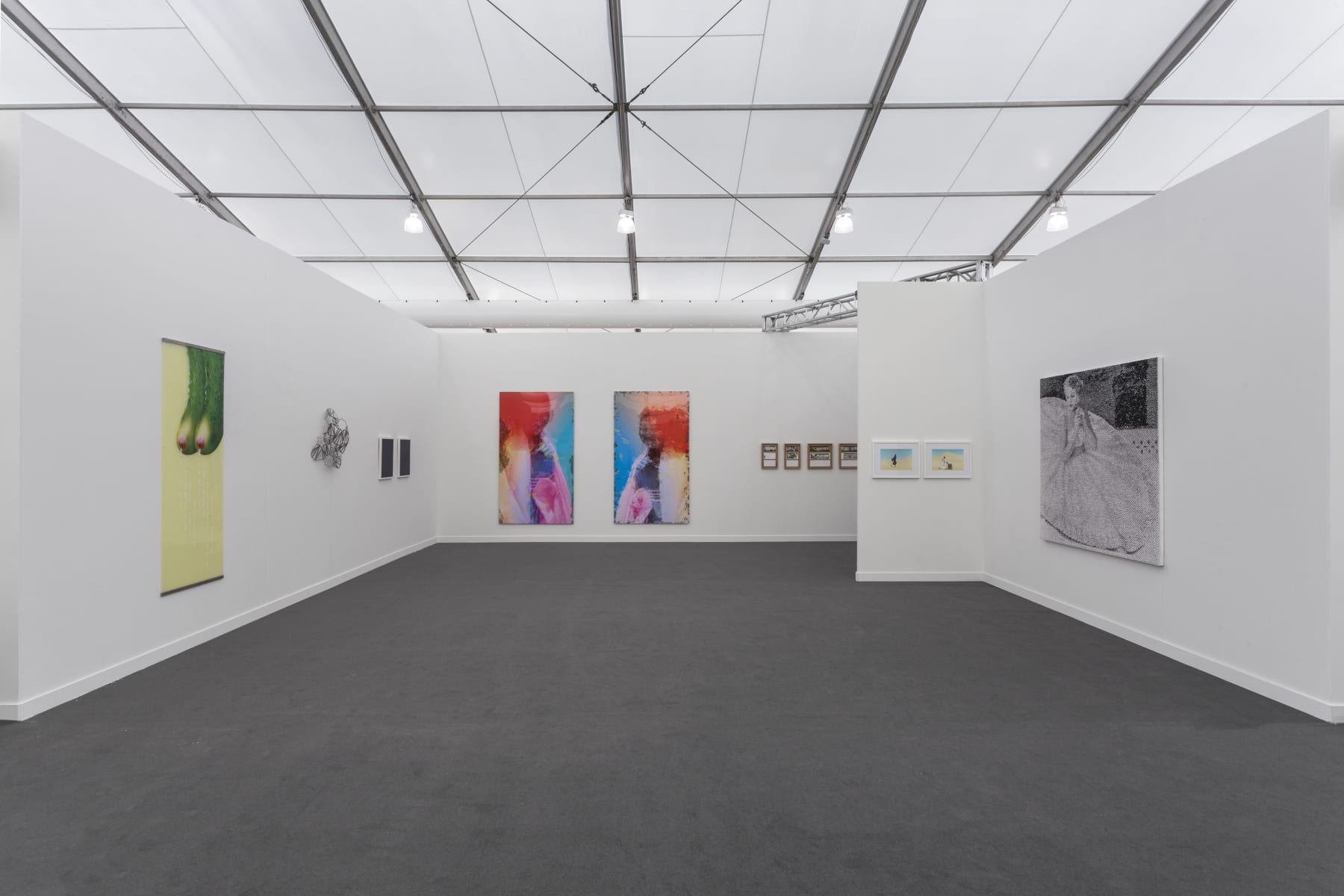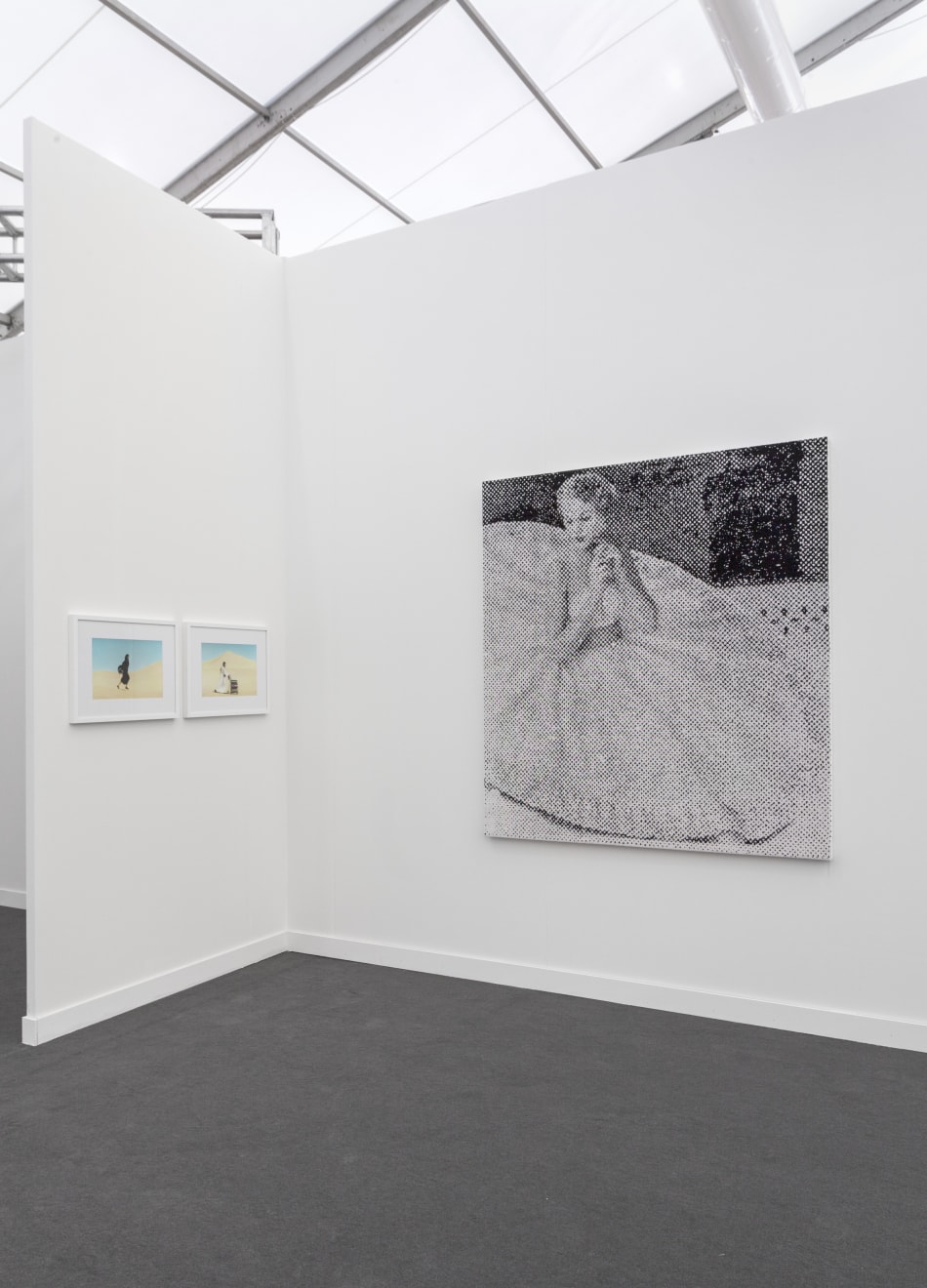FRIEZE NEW YORK 2018
The Third Line participates in the 7th edition of Frieze New York with a group presentation of works by Abbas Akhavan, Farhad Moshiri, Joana Hadjithomas and Khalil Joreige, Sahand Hesamiyan, Slavs and Tatars, Sophia Al Maria and Youssef Nabil. The booth showcases a variety of works extracted from each of the artists own conceptual roots to fit in a space where they physically interact with one another, devoid of a linear, single-narrative.
Abbas Akhavan’s practice ranges from site-specific ephemeral installations to drawing, video, sculpture and performance. The direction of his research has been deeply influenced by the specificity of the sites where he works: the architectures that house them, the economies that surround them, and the people that frequent them. The domestic sphere, as a forked space between hospitality and hostility, has been an ongoing area of research in his practice. More recent works have shifted focus, wandering onto spaces and species just outside the home – the garden, the backyard, and other domesticated landscapes. In recent works called Untitled (2018), Abbas conceals portraits of animals within frames, where the clear glass has been replaced with the back of a mirror. The images, which are of animal selfies, are shown within an enclosed space, one not accessible to human eyes - but rather within a space where the images get to see themselves.
Farhad Moshiri’s Girl with a Ruffle Skirt (2018) employs the artist’s signature technique of handembroidering beads to form reproductions of photographs. The surface of the canvas allows a glimpse into the physicality of the work, breaking down the observable into three dimensional beads. The monochromatic work moves between the real and the imagined, and continues to provide a critical commentary on the East-West dichotomy, which is ever present in the artist’s practice. Much like the dot-matrix printing of newspaper photos and comic book illustrations, a recurrent theme in popart, Girl with a Ruffle Skirt stems from Farhad’s fascination with the idea of pixelation that he encountered when browsing through censored images in Iran.
An Athenian Time Capsule by Joana Hadjithomas and Khalil Joreige makes the deterioration of cities and symbolic sites felt and stresses the effects of time and memory, both a very personal memory and the collective memory of a city. The work is a continuation of their ongoing Unconformities project, the outcome of several years of collaborative research and investigation and for which Joana and Khalil were awarded the prestigious Marcel Duchamp prize in October 2017. The artists place excavated elements of a city in a cylindrical structure in which the details of the materials can be viewed – or read – in detail.
Science, geometry, and the metaphysical all come together in Sahand Hesamiyan’s delicate sculpture. Majaz (2017) takes cues from Islamic architecture and ancient concepts of transcendence. Sahand reinterprets the shapes, adornment techniques, and geometry of Islamic architecture, particularly the honeycombed form of the muqarna, to create an abstracted, interactive object executed in stainless steel. Rather than solely relying on light and reflection, Majaz marks Sahand’s first experimentation with shadows and the three-dimensional optical illusions that they may create.
Slavs and Tatars is an art collective devoted to an area East of the former Berlin Wall and West of the Great Wall of China known as Eurasia. Their practice is based on three activities: exhibitions, books and lecture-performances. With a heady mix of high and low brow humor, the artists turn to sculptures, installations, and text to excavate and explore a geography that is equally imagined as it is political. From their Pickle Politics series, the collective presents Hammer and Nipple (2016), a feminist appropriation of the gherkin – a pickled cucumber. The series looks to the practices and symbolism of fermentation, constructing a political argument using notions of the rotten, the spoiled, and the soured. In Hammer and Nipple, accompanying the imagery is text that reads, “Soured rule, no mother’s best, Curd milk oozing from her breast” in Polish. The work urges to reconsider the soured relationship between rulers and public, often characterized as a nourishing one.
Notions of language and identity are also prevalent in Sophia Al Maria’s practice. Best known for her coinage of Gulf Futurism, she considers how hypermediation, reactionary Islam, and the corrosive effects of consumerism result in the atomised isolation of individuals. Her 2017 film The Magical State features a young woman who speaks Wayuunaiki, the rare language of an ancient tribe inhabiting the Columbian-Venezuelan border. Large-scale prints of Sophia’s work unify vibrant stills from the film and text from the heroine’s monologue in Wayuunaiki.
A diptych from Youssef Nabil’s film You Never Left (2010) marked a crucial turning point in the artist's career. The hand coloured stills are taken from his eponymous first film starring Fanny Ardant and Tahar Rahim and done in Youssef’s characteristic technique – one that finds inspiration in the movie posters and billboards of the Egyptian cinema of the mid twentieth century. Youssef’s work evokes the outmoded feel of the photo-novels that accompanied cinema at the time and highlight in each portrait the extraordinary character of his models, distinguished artists, actors, friends and himself.















